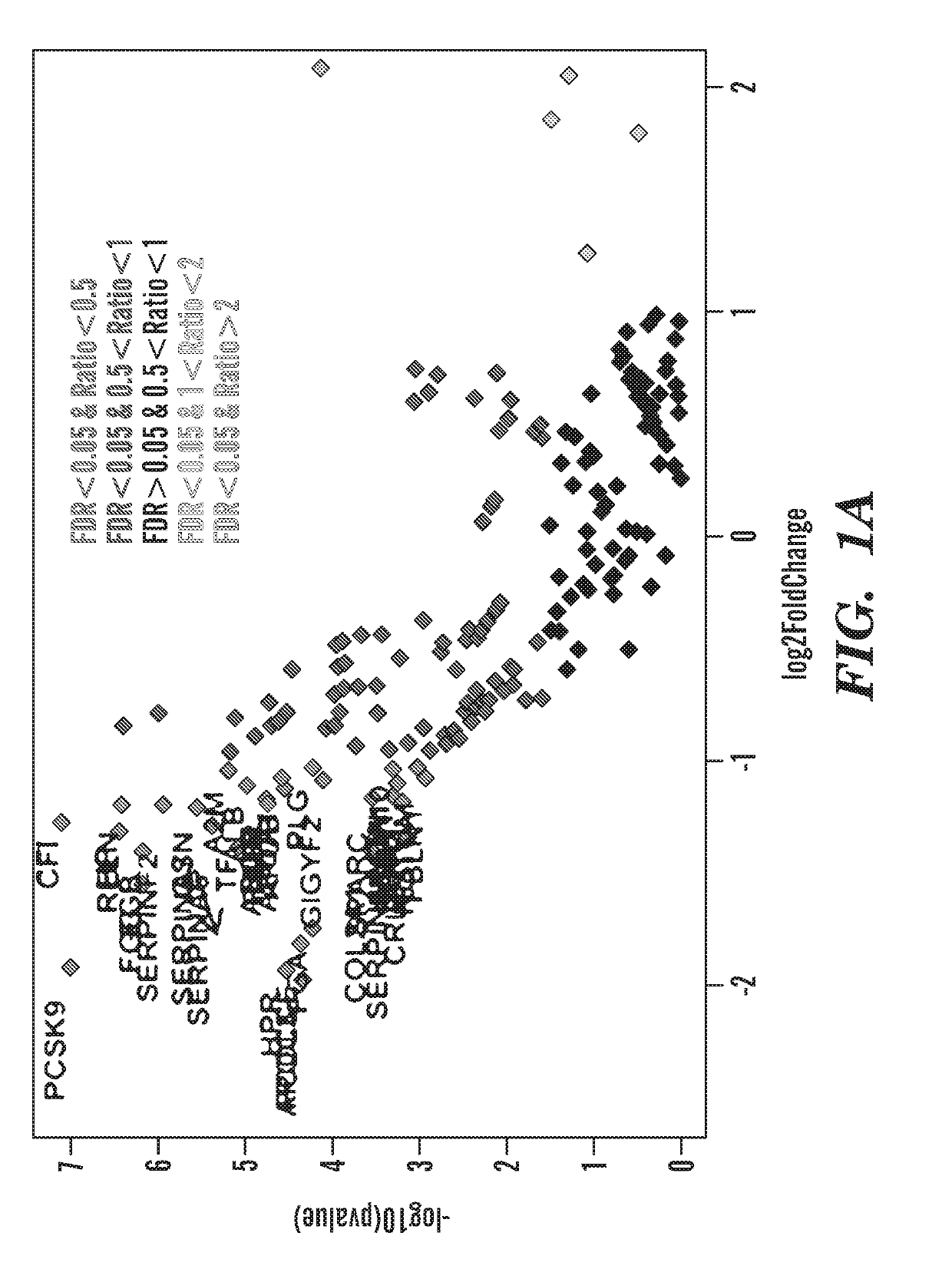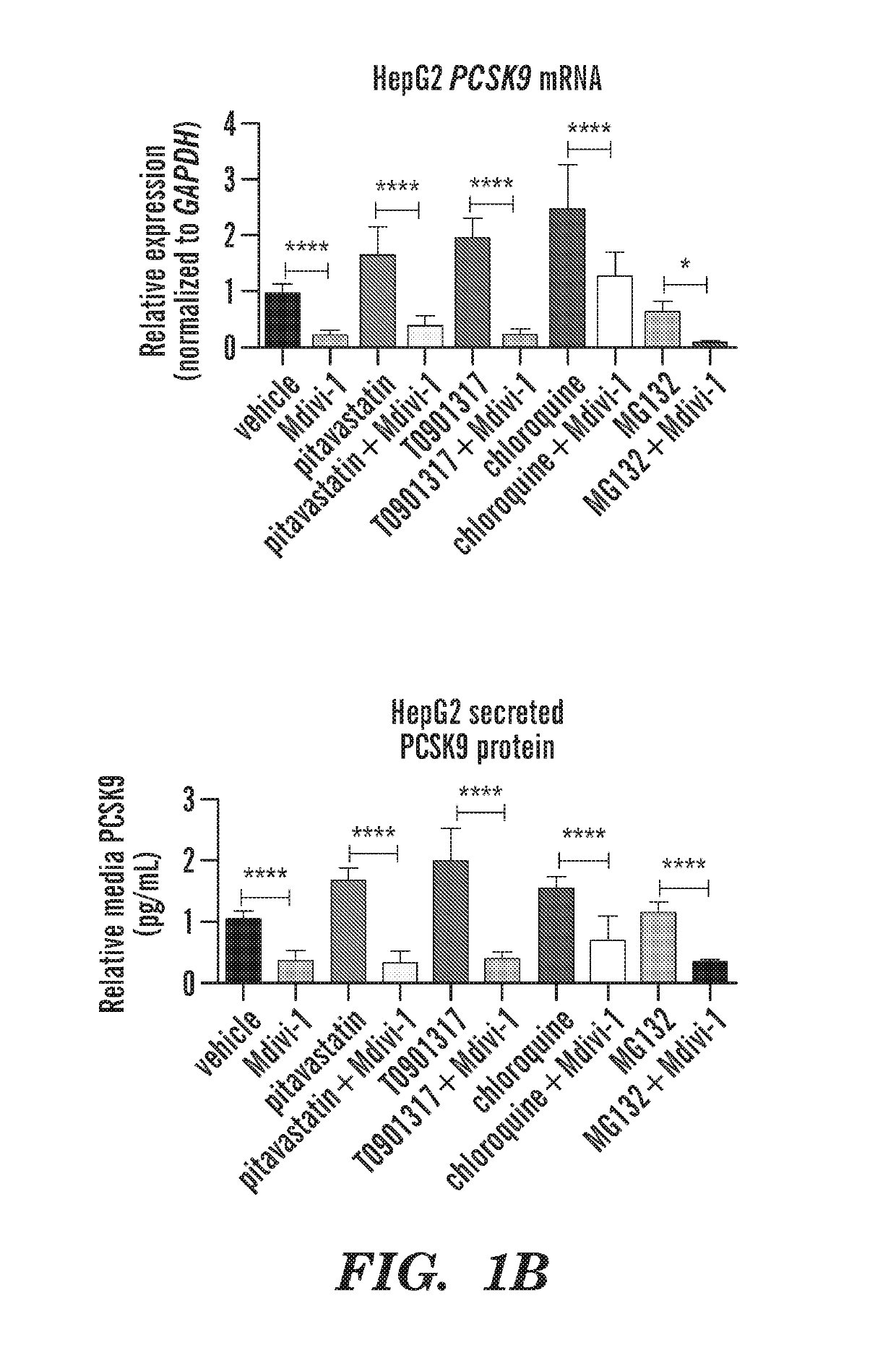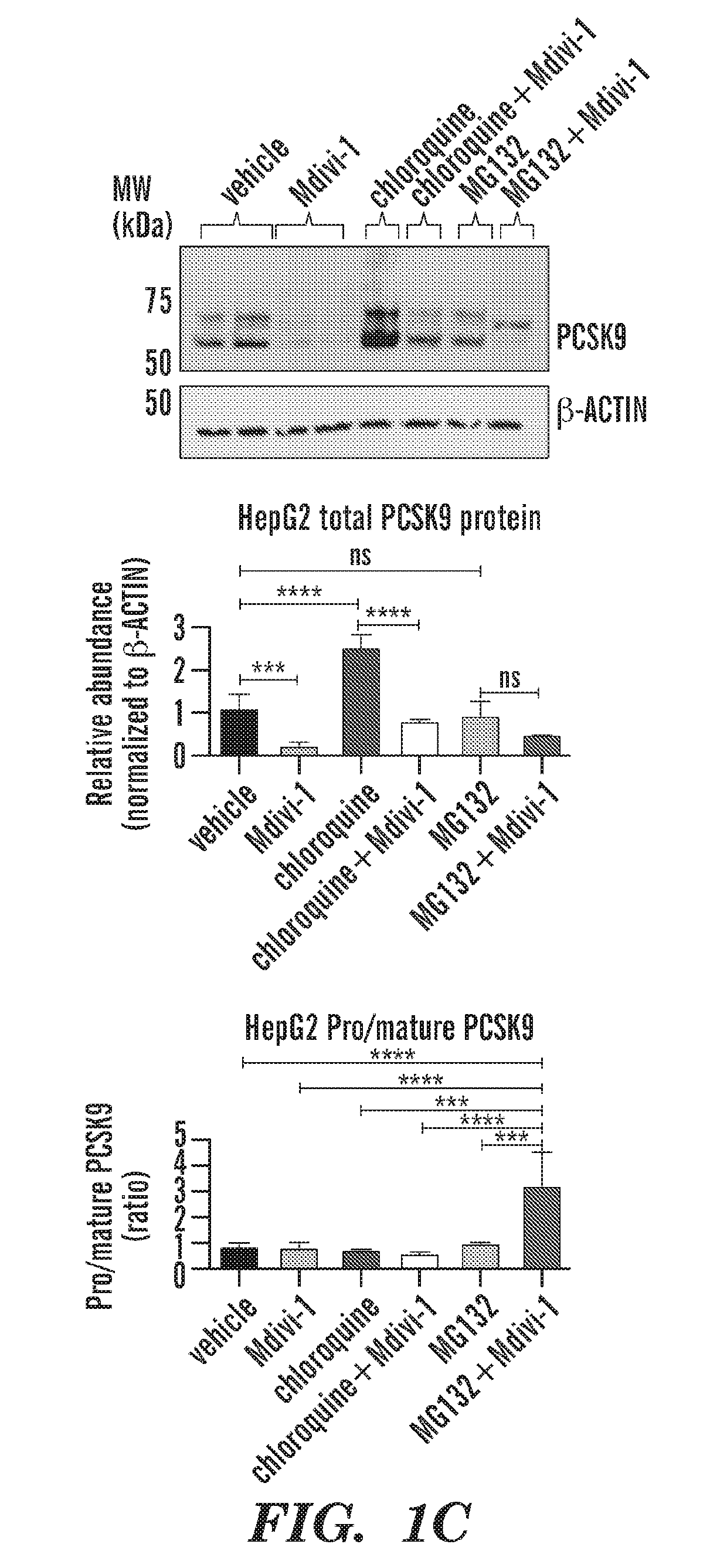Modulation of pcsk9 and ldlr through drp1 inhibition
a drp1 inhibitor and pcsk9 technology, applied in the direction of drug compositions, genetic material ingredients, metabolic disorders, etc., can solve the problems of substantial effort, liver toxicity, side effects of hmg-coa reductase inhibitors, etc., to delay the progression of the disease, reduce or improve symptoms, and reduce one or more measurable markers.
- Summary
- Abstract
- Description
- Claims
- Application Information
AI Technical Summary
Benefits of technology
Problems solved by technology
Method used
Image
Examples
example 1
d
[0195]Proteostasis, in which cells regulate protein homeostasis, is achieved through biogenesis, folding and maturation, transport, the ubiquitin-proteasome system, and autophagic / lysosomal-mediated protein degradation mechanisms. Dysfunctional proteostasis is associated with various disorders, including diabetes mellitus, cancer, neurodegenerative, and cardiovascular diseases1. Related to protein regulation in cardiovascular disease, proprotein convertase subtilisin / kexin type 9 (PCSK9), a crucial regulator of low-density lipoprotein metabolism, is involved in autophagy-mediated apolipoprotein B metabolism2, vascular inflammation3, and is associated with increased cardiovascular risk4-6. PCSK9 small molecule inhibitor development has proven difficult, but if achieved could provide a broader role for PCSK9 inhibition beyond antibody therapies that, due to high cost, are only available to a restricted patient population7,8.
[0196]Nascent PCSK9 is transported from the endoplasmic reti...
example 2
[0199]Clinical evidence has established that elevated levels of LDL cholesterol increase cardiovascular risk, with PCSK9 being a key regulator of LDL metabolism (1-3). Secreted PCSK9 binds LDL receptor (LDLR), internalizes and then directs LDLR to the lysosome leading to its degradation instead of recycling to the plasma membrane. Substantial effort has been made targeting PCSK9; however, small molecule inhibitor development has proven difficult, but if achieved could provide a broader role for PCSK9 therapies (4, 5). The data provided herein show that DRP1 regulates PCSK9 secretion likely through fission of select endoplasmic reticulum (ER) vesicles. It was found that DRP1 small molecule inhibition or CRISPR / Cas9-mediated knockout in human liver cells, and liver specific deletion in mice substantially reduced PCSK9 secretion.
[0200]DRP1 is a well-established regulator of mitochondrial fission (6, 7), although whether DRP1 regulates protein trafficking through ER membrane fission has...
examples 1 & 2
REFERENCES FOR EXAMPLES 1 & 2
[0214]1. Henning R H, Brundel B J J M. Proteostasis in cardiac health and disease. Nat Rev Cardiol; 2017: doi: 10.1038[0215]2. Sun H, et al. Proprotein convertase subtilisin / kexin type 9 interacts with apolipoprotein B and prevents its intracellular degradation irrespective of the low-density lipoprotein receptor. Arterioscler Thromb Vasc Biol. 2012; 7:1585-1595.[0216]3. Tang Z H, et al. New role of PCSK9 in atherosclerotic inflammation promotion involving the TLR4 / NF-κB pathway. Atherosclerosis 2017; 262:113-122.[0217]4. Abifadel M, et al. Mutations in PCSK9 cause autosomal dominant hypercholesterolemia. Nat Genet. 2003; 34:154-156.[0218]5. Chapman M J et al.; PCSK9 Forum. PCSK9 inhibitors and cardiovascular disease: heralding a new therapeutic era. Curr Opin Lipidol. 2015; 26:511-520.[0219]6. Park S W, Moon Y A, Horton J D. Post-transcriptional regulation of low density lipoprotein receptor protein by proprotein convertase subtilisin / kexin type 9a in m...
PUM
| Property | Measurement | Unit |
|---|---|---|
| Density | aaaaa | aaaaa |
Abstract
Description
Claims
Application Information
 Login to View More
Login to View More - R&D
- Intellectual Property
- Life Sciences
- Materials
- Tech Scout
- Unparalleled Data Quality
- Higher Quality Content
- 60% Fewer Hallucinations
Browse by: Latest US Patents, China's latest patents, Technical Efficacy Thesaurus, Application Domain, Technology Topic, Popular Technical Reports.
© 2025 PatSnap. All rights reserved.Legal|Privacy policy|Modern Slavery Act Transparency Statement|Sitemap|About US| Contact US: help@patsnap.com



